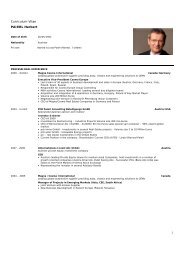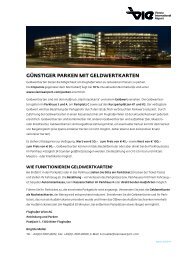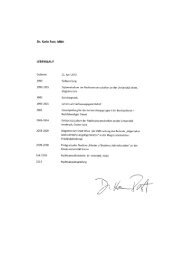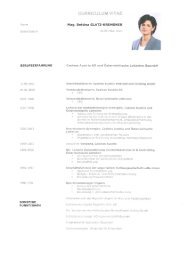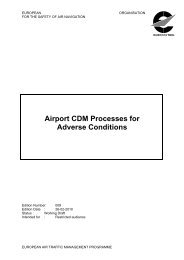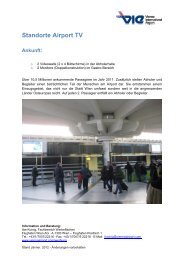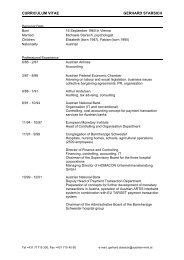Annual Report 2001 - Flughafen Wien
Annual Report 2001 - Flughafen Wien
Annual Report 2001 - Flughafen Wien
You also want an ePaper? Increase the reach of your titles
YUMPU automatically turns print PDFs into web optimized ePapers that Google loves.
Major differences between IAS and Austrian accounting principles<br />
Basic conceptual differences<br />
___Austrian accounting principles, which are codified in the Commercial Code, place the principle<br />
of creditor protection in the foreground and correspondingly assign great importance to<br />
the principle of conservatism. The determinant position of commercial law financial statements<br />
for tax assessment also has a major influence on financial statements prepared in<br />
keeping with Austrian accounting principles.<br />
___The primary goal of accounting under IAS is to provide appropriate decision-making information<br />
for shareholders and investors. IAS therefore place higher value than Austrian<br />
accounting principles on the comparability of financial statements, both over time and<br />
between companies.<br />
___Following is a presentation of specific differences that are of special importance for these<br />
financial statements:<br />
Fixed assets<br />
___The Austrian Commercial Code prescribes conservative values for depreciation and the<br />
useful lives of assets in keeping with the fundamental principles of accounting. Under IAS,<br />
depreciation periods must be regularly compared with the actual useful lives of assets and<br />
adjusted where necessary. This procedure led to longer useful lives for certain assets owned<br />
by <strong>Flughafen</strong> <strong>Wien</strong> AG, in particular runways, aprons and taxiways.<br />
___Under Austrian accounting principles, financial assets must be recorded at the lower of<br />
purchase price or market value. IAS required the use of market value. In the consolidated<br />
financial statements, non-current securities held by <strong>Flughafen</strong> <strong>Wien</strong> AG are treated the same<br />
as current securities.<br />
Current securities<br />
___The Austrian Commercial Code requires current securities to be recorded at the lower of<br />
acquisition cost or market value. In accordance with IAS 39, these securities are shown at<br />
market value in the consolidated financial statements. Write-ups are mandatory. Changes in<br />
market value over the prior year are recorded in the consolidated financial statements of<br />
<strong>Flughafen</strong> <strong>Wien</strong> AG under equity (revaluation reserve) with no effect on the income statement.<br />
Treasury stock<br />
___In accordance with the Austrian Commercial Code, treasury stock must be recorded under<br />
non-current or current assets and a separate reserve must be created for this item under equity<br />
and liabilities.<br />
___According to IAS, changes in shares outstanding must be recorded under equity.<br />
Deferred taxes<br />
___Austrian accounting principles are based on the “timing concept“. The creation of<br />
deferred tax provisions is therefore only required for differences between financial statements<br />
prepared according to commercial law and taxable results if these differences are<br />
expected to be offset in the future. The creation of deferred tax assets in individual company<br />
financial statements is optional; provisions for deferred taxes are mandatory. Deferred tax<br />
assets on loss carry-forwards may not be capitalized.<br />
___IAS focus on the “temporary concept“ in conjunction with the “balance sheet - liability<br />
method“. Deferred taxes must therefore be created for all differences arising between financial<br />
statements prepared for tax purposes and IAS financial statements; in such cases, deferred<br />
taxes should be calculated based on the tax rate expected in the year of use. No discounts are<br />
permitted. Deferred tax assets on tax loss carry-forwards must generally be capitalized and<br />
should be analysed in the same manner as other assets to estimate the realisable amount.<br />
96 Notes<br />
<strong>Annual</strong> <strong>Report</strong> <strong>2001</strong>





